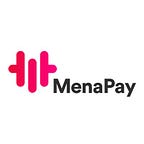By our Software Architect Ali Işık: Blockchain Technology as a Payment System
Our software architect Ali Işık has shared his technical wisdom on international payment systems and blockchain technology.
Requirements for an International Payment Systems
Following the initial success of Bitcoin, the idea of an immutable append-only distributed ledger being used as an international payments system has attracted great interest. As the volume of daily transactions on Bitcoin expanded, however, it became clear that modifications would be required to blockchain, as defined by the open sourced Bitcoin code. The idea is to support the typical requirements of a payments system whose use cases are normally handled by credit and debit cards, and behind the scenes, by services such as Swift.
Companies do not want their detailed sales figures to be easily accessed by rivals. Consumers expect their payment process to be complete within fifteen seconds. At scale, a payment system will have to be able to process transactions at a sustained rate of well over one hundred per second.
If the payment system is to support micropayments, per transaction fees should not be higher than those found in existing systems, such as credit cards. Judged against every one of these requirements, Bitcoin falls short.
The industry is, of course, well aware of Bitcoin’s shortcomings as a general purpose micropayment system. Thus various alternative distributed ledgers with their associated cryptocurrencies have emerged, improving on Bitcoin in various ways, at least for some use cases.
Does a micropayments blockchain system need chaincode?
Many use cases, especially those from enterprises, require the execution of some logic on the payment system. For example, a company might stipulate that money transfers above a certain threshold require the approval of a manager. In that case, the transaction should be put on hold until such approval arrives, or the transaction faces timeout. Although Bitcoin supports a basic scripting facility, more complex scenarios require the ability to run what amount to applications on the blockchain, which would then function as a distributed computer running those applications.
A blockchain that supports the same use cases as Bitcoin, but is also a more capable distributed computing platform is Ethereum.
Ethereum defines its own virtual machine, the EVM, and a domain specific language that compiles into bytecode for the EVM. It has a significantly higher transaction throughput than Bitcoin. Transaction fees are much lower on the Ethereum network.
Ethereum has been very successful in many aspects. It has demonstrated the feasibility of a worldwide general purpose distributed computing facility. However, it still lacks some features most enterprises consider mandatory. Perhaps the most salient among these are transaction and contract privacy, transaction throughput and the time it takes to reach (probabilistic) settlement finality.
To find more about the first Ethereum-based payment system of MENA, visit www.menapay.io
